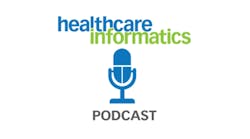The transformative effects of healthcare reform and ARRA-HITECH are not always apparent to facility planners and architects, but the provisions are tightly linked to building and renovation plans, Healthcare Informatics Editor-in-Chief Mark Hagland told the Healthcare Design Executive Forum attendees in Las Vegas. The day-long forum, which was part of Healthcare Design 2010, focused on technology and its implications for current and future healthcare environments.“ARRA-HITECH, along with HIPAA, is turbo-charging change and the vast majority of hospital organizations who are identified as “eligible providers” are unprepared,” Hagland noted.Although the legislation may appear straightforward, the requirements are extremely complex, Hagland emphasized. Major changes for hospitals and health systems will be required. In addition to meeting mandates for meaningful use of electronic medical records (EMR), there will be pressure for care providers to be hyper-efficient and hyper-effective as accountability, transparency, and quality initiatives count for dollars. High-Tech Expectations for Bedside CareThe transformative effects of healthcare reform and ARRA-HITECH are not always apparent to facility planners and architects, but the provisions are tightly linked to building and renovation plans, Healthcare Informatics Editor-in-Chief Mark Hagland told the Healthcare Design Executive Forum attendees in Las Vegas. The day-long forum, which was part of Healthcare Design 2010, focused on technology and its implications for current and future healthcare environments.These mandates also impact hospital architecture and design planning. "More healthcare is being delivered at the bedside and the expectation is that wireless will be available everywhere. That is our challenge," said Ed Lowell, director of IS infrastructure at Lucille Packard Children's Hospital at Stanford University in Calif. As the organization increases EMR usage, there will be more devices and more wiring in the ceiling and the infrastructure to support them needs to be planned.Walter Jones, Jr., architect and senior vice president of facilities at Parkland Health and Hospital System in Dallas, leads a $1 billion building project, admits he doesn't really know what technology advancements will be needed when his hospital opens. But he is realistic: "We are not designing a hospital of the future because we don't know that that will be. We're building a hospital for the future." Incorporating Flexibility into Infrastructure Infinite design flexibility to accommodate all potential options is possible with enough money, noted David Labuskes, vice president of special systems design group at Dallas-based RTKL Associates. "We haven't found that project yet." And he does not expect to do so.People caring for people remains the key mission of Dublin Methodist Hospital, maintains Cheryl Herbert, president. The Dublin, Ohio-based facility opened in 2008 as an all-digital hospital and part of the OhioHealth family of care provider organizations. "We didn't see the sense of beginning [with the existing workflow] and took a leap by going down the [all-digital] path. Now we're the one hospital in the system that is ready for meaningful use."But Herbert is clear about the role of technology emphasizing role of human interaction with technology in healthcare. "Planning for the human interface is the most important issue I have to deal with," she said. "Ultimately, care delivery is people taking care of people."
Sponsored Recommendations
Sponsored Recommendations



